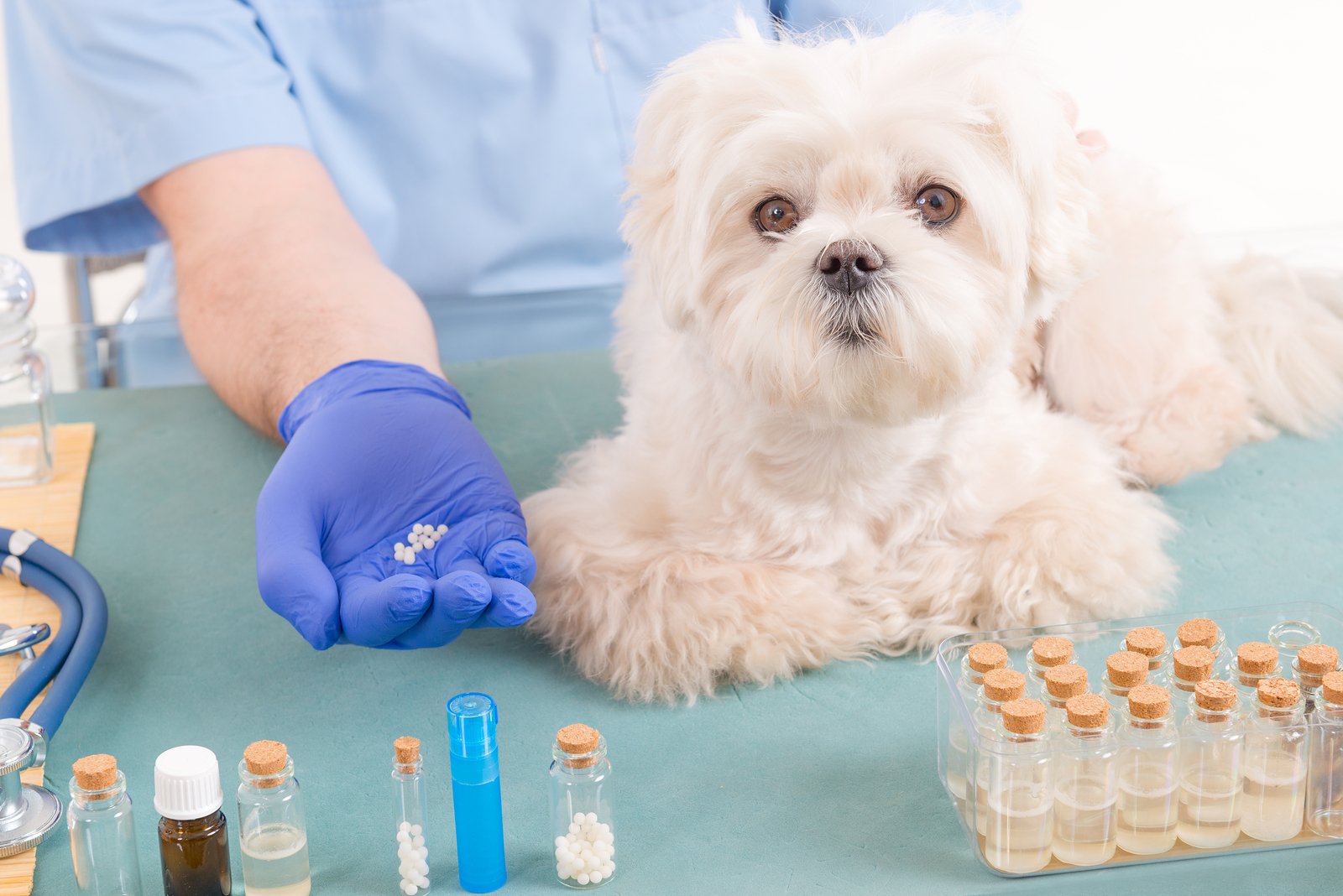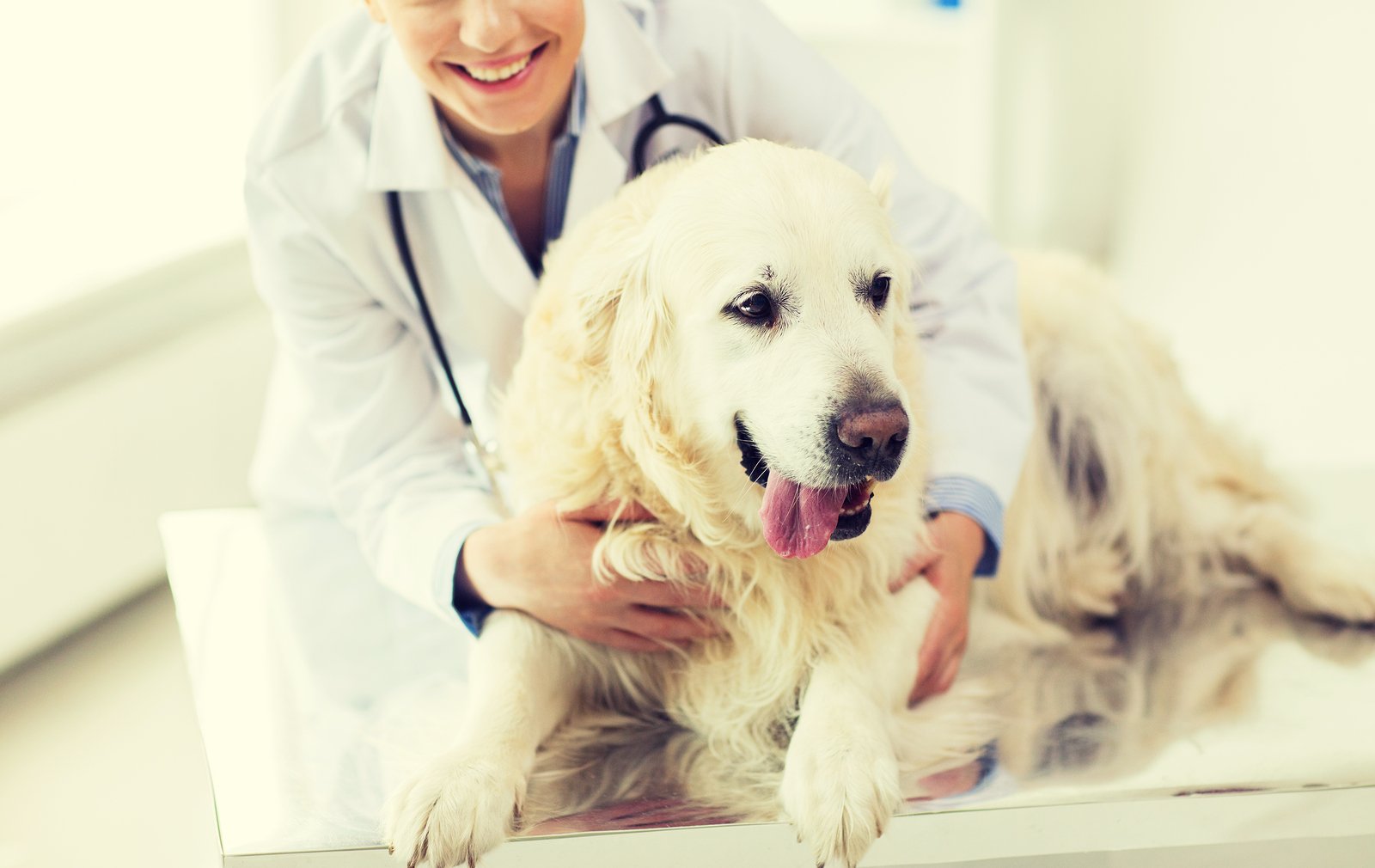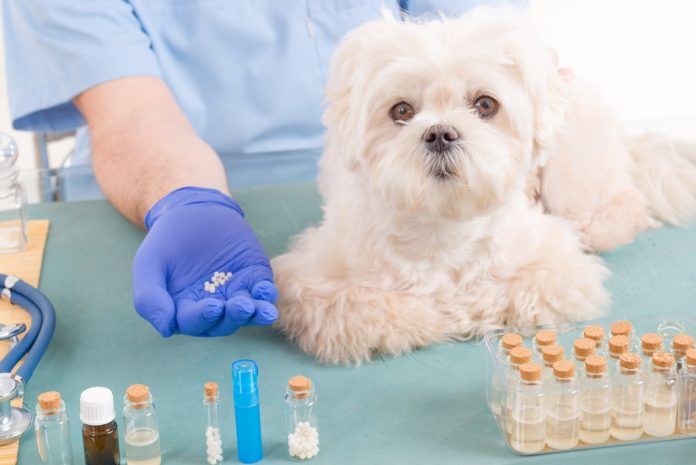

“When I was growing up, we were taught that you pry the dog’s mouth open and then shove the medicine down their throat,” says veterinarian Stephanie Borns-Weil, DVM. “What I’ve been thinking about for a long time now is how you can get canine patients to participate in their own care rather than making it seem like an adversarial relationship. And what I’ve found is that you can actually train animals to play a willing role. You can make it a positive thing,” says the doctor, who heads up the Tufts Animal Behavior Clinic.
That way, she comments, “instead of having to pull your dog out from under the table when she hears the pill bottle shake, she comes running to you. It has the added advantage of being good for compliance over the long term. Many dogs will begin to ask for their medication at the time of day that they’re due for it. It’s all a matter of desensitizing your pet to the things she’s afraid of, or that make her anxious.”
Veterinarians are on board for making health care less upsetting for dogs. “There has been a growing concern among vets about the need to decrease the stress of veterinary care,” Dr. Borns-Weil notes.
The good news here: there are things you can do at home not only to make your own medical care of your dog easier but also to relieve your pet’s stress at the doctor’s office. “You can set up your dog for success in terms of health care,” the behaviorist notes. Here are 10 ways how.


When you yourself are the healthcare provider
Some medical care happens right at home.
1. If your dog takes pills. Some dogs swallow their oral medication readily, especially if you wrap it in a bit of cheese or salami (as long as the salt or other nutrients in those foods won’t work against their health). But other dogs are “tough to pill,” Dr. Borns-Weil remarks. If that’s the case, she suggests making three balls of food, one with the pill and the other two empty. Give one of the blanks first, then the one with the pill, she advises, but only while holding the second blank right in front of your dog’s nose. “They’ll swallow number two quickly,” she says, “so they can get to the next delicious blank without the unpleasant center ‘filling.'”
2. For dogs getting ear or eye drops. Let’s say a dog has a painful ear infection, Dr. Borns-Weil says. When the veterinarian puts in the medication for the first time, she says, the best thing is to put the pet under deep sedation or even anesthesia. There’s no way you can get the drops in without making the dog even more uncomfortable, nor can you desensitize a dog to drops if the spot they’re supposed to go is hurting her (see sidebar on page 12 for more info on faulty desensitization techniques). But once the medicine has started to take effect and the dog is feeling better, you can help her adjust to the drops at home with the clicker method.
At first, when the dog sees the bottle and cotton balls, click the clicker and toss a treat. Once the dog is comfortable looking at you holding the bottle (perhaps from behind a chair), reward her again. Always use a click before proffering the treat as a way of priming the pump, that is, letting the dog know the sequence of the good thing coming. “What you’re trying to do,” Dr. Borns-Weil says, “is get her to approach you when you’re holding the ‘noxious’ stuff in your hand. When the dog gets right up to you, you can shape the behavior further. Click and toss another treat.
“Keep moving the bar — that’s the way to shape the behavior until the dog gets to the point that she’s okay with sitting still to have the drops inserted because she knows she will get treats,” the doctor says. When she will come within two feet of your reach, you no longer reward for three feet. Then you move to touching the flap of her ear, then lifting her ear, and so on, all the way to putting in the drops. You might even get to the point that she puts her head between your knees, waiting for both the drops and the treat.
In the exam room
Going to the doctor is a fact of life, for dogs as well as people. Here’s how to make it less stressful for your pet, to whom you can’t explain with words that the unsettling, or outright scary, experience is for her own good.
3. Touch your dog all over when she’s young. “You want to prepare your pet to be touched in all the ways she will need to be touched by the veterinarian,” says Dr. Borns-Weil. So when she first comes to live with you, even if she’s not a puppy, get her accustomed to being touched on her belly, her paws, and so on. “Make it a positive experience,” the doctor says. “Play with her as you touch her, speak lovingly or soothingly, stroke her hair, provide her with treats.”
4. Adjust your dog from puppyhood to wear a basket muzzle. Dogs in pain, even the gentlest dogs who wouldn’t hurt a soul, sometimes bite when they feel overwhelmed by the discomfort. “The threshold for biting varies,” say Dr. Borns-Weil, “but just about every dog will bite if she’s severely injured and you try and move her.” Hopefully, your dog will never be in extreme pain. But teaching her to feel comfortable wearing a basket muzzle “is just a little bit of an insurance policy in case it’s ever needed for treatment without her biting in response,” she comments. “It sets your pet up for success if she has a dire emergency.”
Put on a basket muzzle the way you would put on a collar or attach a leash, the doctor advises. Get her used to it. She won’t need it as part of everyday life, but if she ever does need it, wearing it won’t increase her stress as the doctor touches her to treat whatever is causing the painful problem.
5. Teach your dog to relax on a mat. If a dog is trained to go to a simple mat like a yoga mat or a little rug — something portable — and associate that familiar spot with rewarding experiences like being given treats or favorite toys or a deep brushing, then, when she goes to the vet’s and you bring the mat along for her to sit or lie on, “the unpredictable and unfamiliar becomes a little more predictable and familiar,” Dr. Borns-Weil says.
You can put the mat on the scale, too, she adds. A lot of dogs don’t like being weighed — that slightly raised metallic and somewhat slippery surface can be a bit unnerving — but if the dog is weighed on her mat (subtracting its weight to get the right number), she’ll feel more comfortable and then can be led into the exam room without already having been put through something she doesn’t feel good about.
Dr. Borns-Weil has started putting out yoga mats in her office as well as arranging chairs for her dogs’ owners. “I cut the mats into dog-friendly sizes that I have for all different breeds,” she says, “and I arrange the chairs for the owners so that everyone knows the expectation of where they’re supposed to sit. It takes away so much of the awkwardness people can have about being in the exam room, and that in turn reduces the dog’s awkwardness; they can always tell if their owner feels uncomfortable. I also always have a water bowl for the dog next to her mat,” the doctor says. “Having something to drink decreases her stress further.”
6. If the dog has a housemate or other trusted canine friend, bring that dog along. Sometimes dogs need therapy dogs, too, Dr. Borns-Weil notes. “If you have a worried dog and you bring her calm pal along as a facilitator, it can make the patient feel better,” she says. “The doctor can even perform a ham exam on the relaxed dog so that the stressed dog — the one who’s really there to be tended to — can see that being handled is not a problem.” Bring lots of food treats for both dogs, she advises, especially particularly favored treats that the dog doesn’t often get. Food is a great icebreaker among dogs, especially worried ones. It lets them know you mean well by them.
7. Bring the dog’s favorite toy to the vet’s office. The familiar scent of the toy alone will help ratchet down anxiety.
8. Train your dog to eat while she is being handled. Let’s say your pet has to have one of her legs examined and you know that kind of handling makes her uncomfortable; she instinctively draws back her limb. If she has learned beforehand to nosh on, say, the lid of a yogurt container or the contents of a frozen Kong while she is being touched, you might be able to divert her attention: “Yeah, yeah, something’s happening to my left back leg, but whatever. This yogurt flavor is good!”
9. Accustom your dog to wearing a head halter (or harness if her nose is too short for a head halter). A head halter such as a Gentle Leader, or a harness, will allow you to draw your dog’s head away from the veterinarian or veterinary technician, if need be, yet with a lot less restraint than with a regular collar and leash. It could even help to have the dog look at you during a procedure that takes several seconds or more, like getting blood drawn. (The tactic can be combined with presenting a delicious treat that your dog can target at the same time, like a Kong with peanut butter or liverwurst.)
10. Take your dog to the vet’s office when she doesn’t have an appointment. “Most veterinary offices are fine with your running in with your dog to say ‘hi,'” Dr. Borns-Weil says. The receptionist might hand your pet a nice treat, and that way she will learn that the doctor’s office is a friendly place, not simply a scary place where unwanted touching happens.
Because following these tips will keep your dog’s stress as minimized as possible, it will also promote healing. Less stress means a stronger immune system to fight an illness, Dr. Borns-Weil points out. “It’s a way of putting your pet’s mental health and physical health on the table together, which can only make for a better outcome.”





